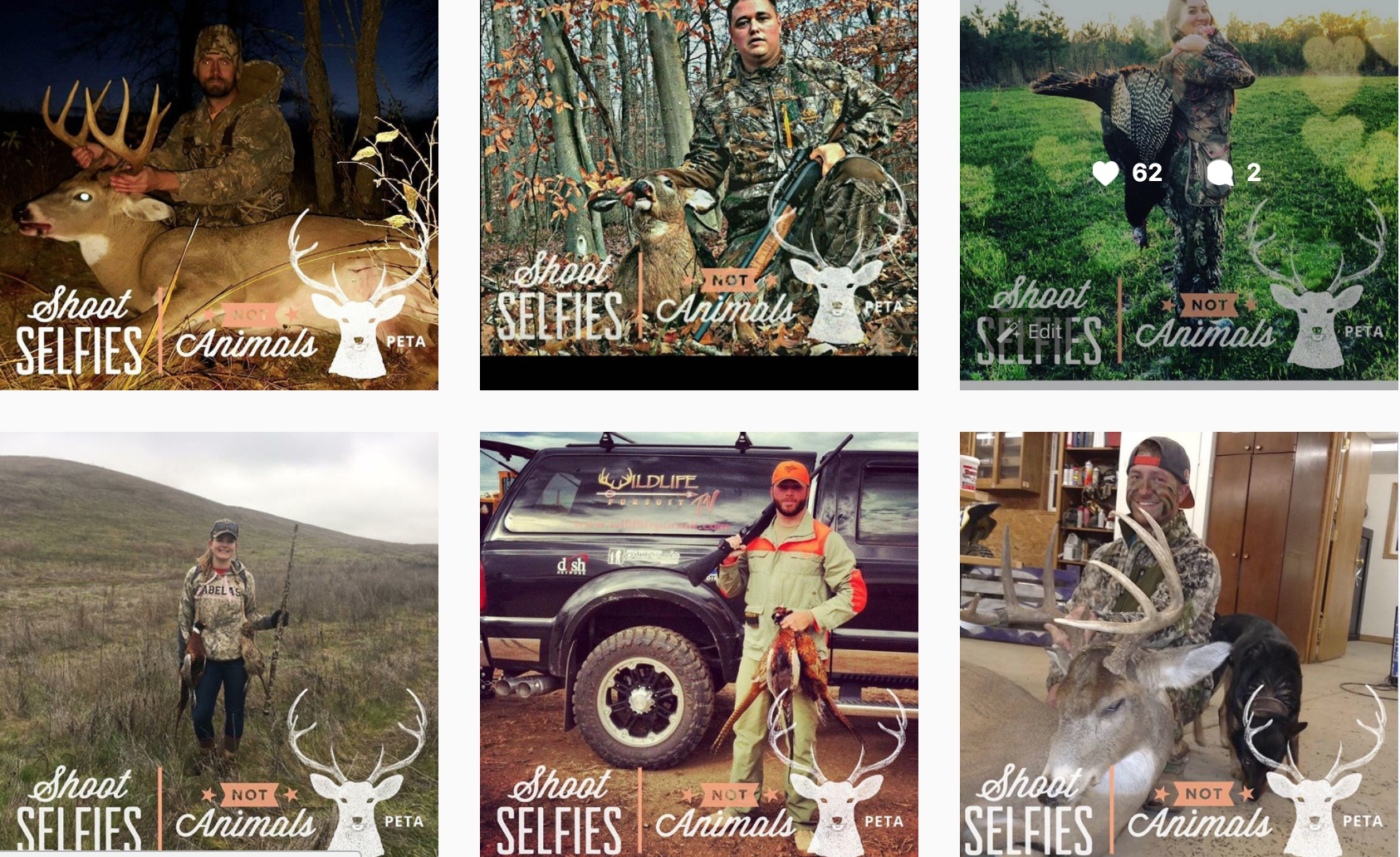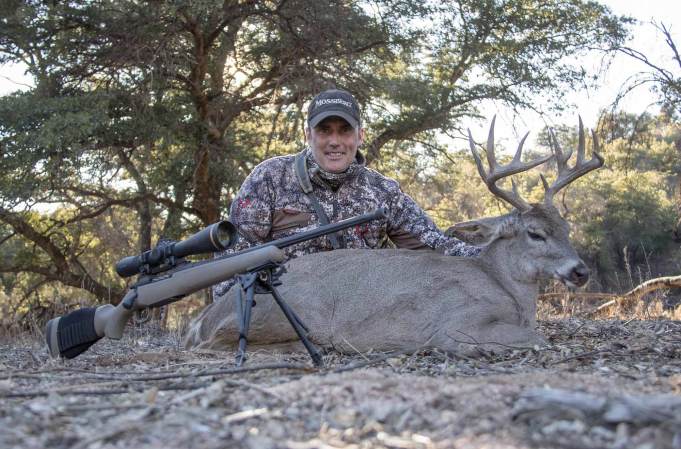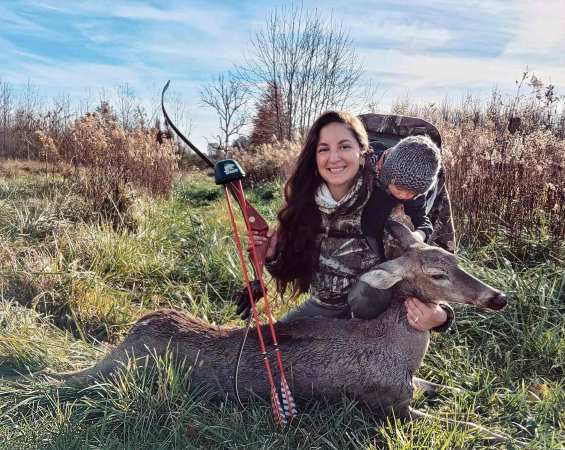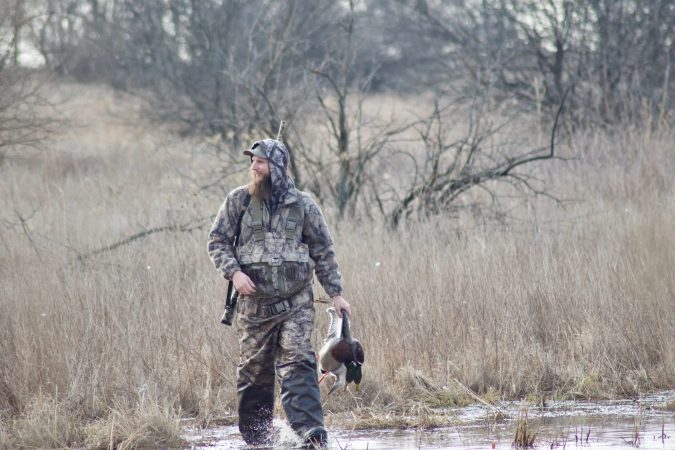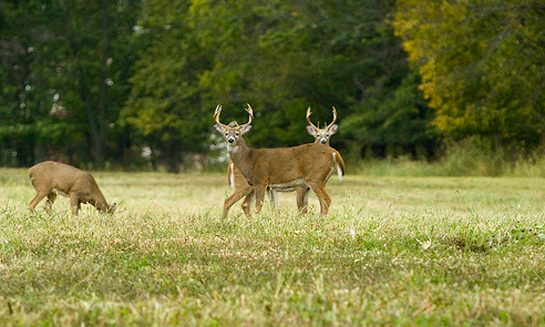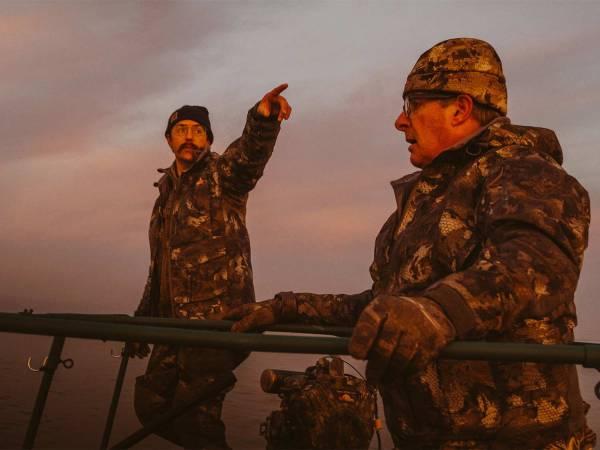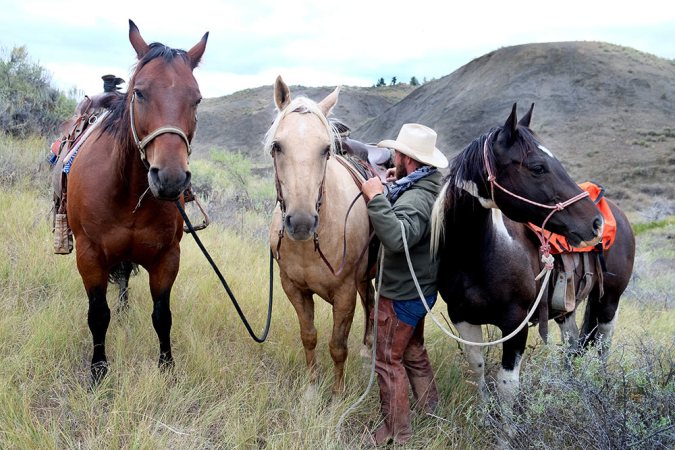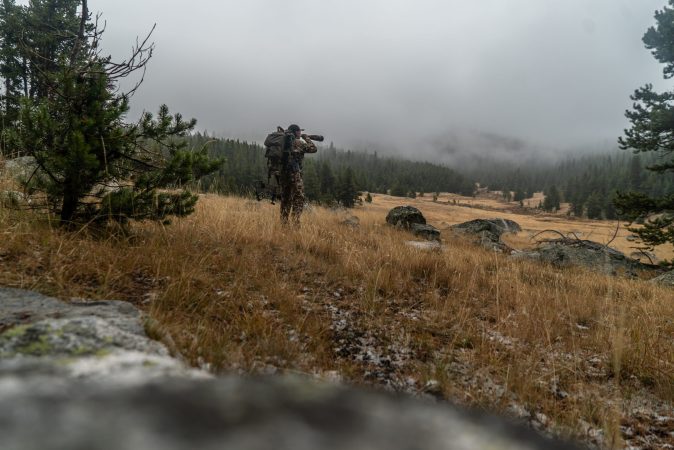Earlier this week, the People for the Ethical Treatment of Animals launched a Facebook profile frame that states: “Shoot selfies, not animals.” The idea is that Facebook and Instagram users can apply this frame to their photos and profile picture to show support for PETA.
If you’re a hunter and have Facebook, you’ve probably already seen what happened next. Thousands of hunters are trolling PETA by using the frame over one of their kill shots.
But, there are some things to carefully consider before using one of your favorite hunting photos to troll PETA.
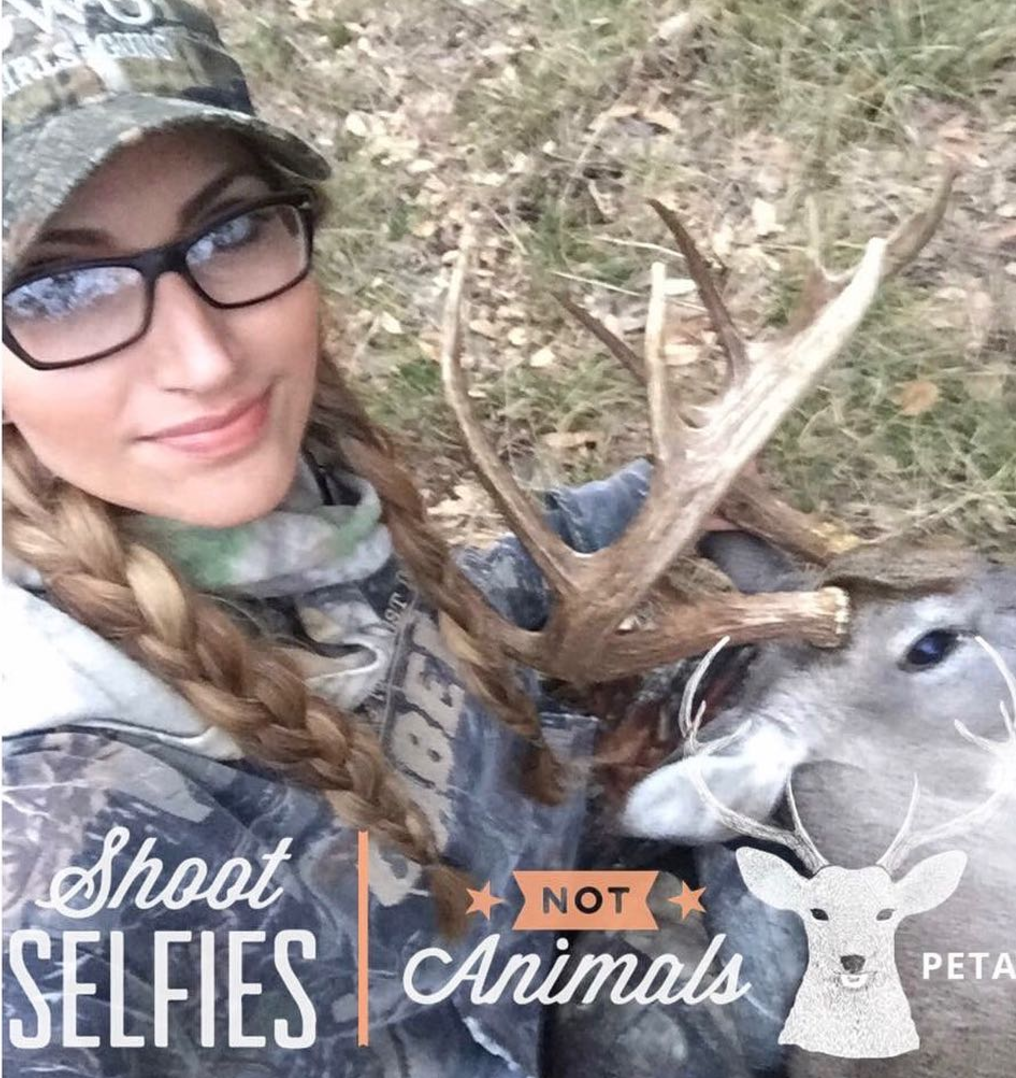
How Frames Work
Facebook frames are free. It doesn’t cost PETA a dime to run the frame, and they aren’t making any money when someone uses the frame. PETA is not capturing any data (like names or email addresses) from individuals who use the frame. The only data PETA does capture are the number of people who use the frame, and how many people see the frame. I talked with our corporate social media gurus and they said the only real benefit for launching a frame like this is for brand and message exposure.
So PETA isn’t using this as a backdoor method for collecting intel on hunters’ social media accounts—at least according to our experts. But it still might be a social media trap.
Why Updating Your Photo Might Backfire on Hunters
First, consider that PETA isn’t trying to convince hunters to stop hunting: The organization is trying to turn non-hunters into anti-hunters. Second, think about all these hero photos from the perspective of a non-hunter.
Most non-hunters agree with hunting when it’s put in the right context. Logically they understand the conservation benefits and they appreciate the idea of killing wild game for the table. I think many non-hunters can also relate to the traditions behind hunting (spending time with family and friends outside) and the reverence hunters have for wilderness and public land. But non-hunters do not agree with “trophy hunting,” even though most probably do not know what trophy hunting is about. Check out this 2015 poll.
I think PETA knows these numbers, too. By flooding Facebook and Instagram with trophy shots, we’re putting thousands of dead animal photos in front of non-hunters who are not asking to view them. If we’re posting these photos just to troll PETA, we’re stripping away the context of the hunt and the whole point of the photo in the first place. Most of the ironic posts using the PETA frame have little or no information about the challenge or ethics of the hunt, the beauty of the landscape and habitat, or all the healthy wild meat those dead critters provided. They are mostly just dead animal photos with text that pokes fun at PETA.
I don’t think non-hunters are laughing along with us.
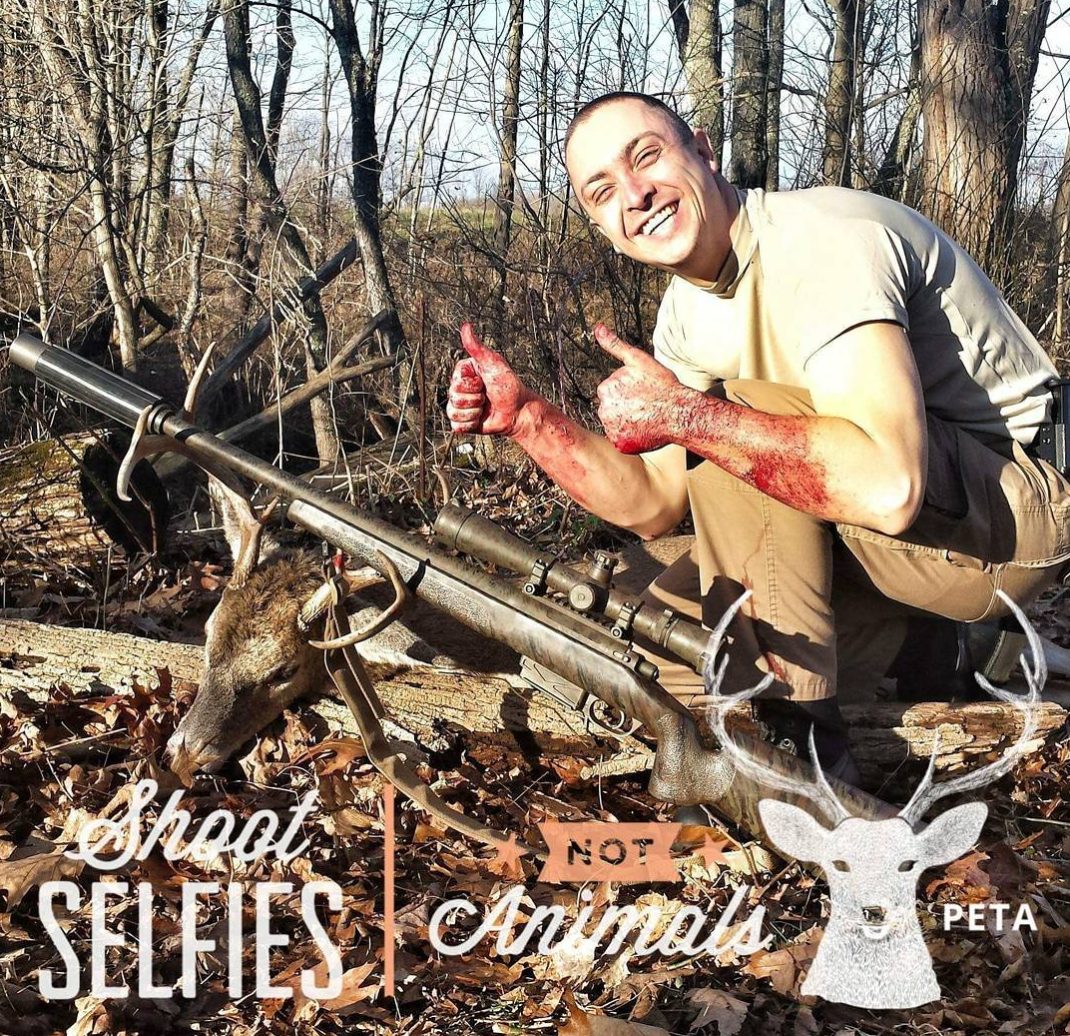
Insights from a Non-Hunter
Remember that PETA does not have facts on its side. It relies on emotion to push people toward its anti-hunting agenda.Think back to PETA’s advertising campaigns that show graphic imagery of animals being tortured or slaughtered. Seeing dead animals in a grip-and-grin photo creates the same type of negative response among many non-hunters.
To get some perspective on this, I reached out to a non-hunting coworker (she does not work for OL or F&S, but one of our sister publications) who lives in New York City. She is not an anti-hunter and “no PETA fan by ANY means.”
I showed her screen shots of a bunch of kill photos with the PETA frame overlay (a few deer, a bobcat, and a wolf). Then I asked: If her hunting friends started posting Facebook photos like this, would it change her view of hunting?
Her response?
“Honestly, yeah. There are a lot of things about hunting that I can understand… While I’ve never done it, there are aspects of it that seem really nice: being outside, communing with a natural ecosystem in a pretty amazing way, solitude, reflection, some sort of primal satisfaction of stalking and killing and winning … I get it. Sounds awesome. Going onto Facebook to be like ‘[expletive] the libbies’ is not hunting. Anybody can rile up some passionate people over the internet; there’s nothing noble in that. It’s kind of ugly and cowardly to me.”
Next I asked her what it is about grip-and-grin trophy photos that’s off-putting.
“I mean I guess I have this pie-in-the-sky, maybe silly mindset that people who like to hunt, at the heart of it, respect the things they’re hunting. Like they take enjoyment out of the activity, but also part of really BEING in that environment enough to sneak up on an animal forces you to connect to nature a bit, and maybe lets you see how you fit into a bigger world most people don’t usually see. When I see these photos of people with a shit-eating grin that says ‘lol I killed it I killed the thing,’ it kind of puts that idealistic thought in the garbage. And that really sucks—even if you know your ideal is not realistic.”
I told her that her idea of hunting was actually spot on, it’s just not wholly represented in these photos, and that she has an open invite to come hunting with Outdoor Life. I’m pretty sure she’s going to take us up on it.
The Bottom Line?
Hunters cannot and should not hide who we are, or what we do. And, killing animals—and being proud of our hard-earned success in the field—is a cornerstone of the hunt itself. Full disclosure: I’ve been the online editor for Outdoor Life for seven years and have personally published hundreds (maybe even thousands) of photos and videos that showed dead game animals. But the point of each of those posts was to tell a story and celebrate the hunt. Not to take shots at anti-hunters. —A.R.
…But We Can Still Punk PETA
Okay, so even if applying an ironic PETA filter isn’t necessarily the best recourse here, we still don’t want to let them get away with their emotionally-fueled, anti-conservation campaign. So we’ve come up with some alternative tactics to check their influence.
1. Create your own Facebook profile photo filter: It’s free and you can do it here via Facebook. Resist phrases that include expletives and “PETA” and instead opt for slogans like “Hunters are Conservationists” or “I Work Hard for My Dinner.” Choose whatever resonates with you most.
2. Add a story or caption to your hunting or fishing profile picture: If you think filters are hokey, you can add a caption to an existing profile picture. For maximum impact, upload a new (and tasteful) hunting or fishing picture so it appears in the Facebook newsfeed, right beside anyone who’s using the PETA filter. What you write for the caption is up to you, but here are some options.
- Tell the story of the hunt. Explain how challenging it was to kill that deer or turkey or elk, and why it was a memorable experience.
- List how many pounds of meat you harvested from that critter and how many meals it might provide for your family.
- Include a fact about how hunting is good for wildlife, habitat, and humans (see below).
3. Fight back with facts: PETA is pulling heartstrings, not data. Use common sense and figures to maintain public support for hunting. You can post a status update, comment on a friend’s PETA-profile pic, or add one of these facts to your own photo. Below are some examples you can copy and paste. Citations listed below.
All Hunters
Each year, nearly $200 million in hunters’ federal excise taxes are distributed to state agencies to support wildlife management programs, the purchase of lands open to hunters, and hunter education and safety classes.
Sportsmen contribute nearly $8 million every day, adding more than $2.9 billion every year for conservation.
Hunters and target shooters have paid more than $7.1 billion in excise taxes for conservation since the inception of the Pittman-Robertson Act in 1937.
Deer Hunters
- Modern day regulated hunting has restored whitetail deer numbers back to what it was prior to European colonization. In 1900, less than half a million whitetail deer remained in the U.S. because of market hunting and poor management. Thanks to conservation programs and modern hunting, the whitetail population has reached some 32 million.
Waterfowlers
For every $25 federal duck stamp purchased, $24.50 goes goes directly to buy and lease wetland habitat on national wildlife refuges. Anyone who hunts waterfowl must purchase a stamp.
The purchase of federal duck stamps by waterfowl hunters has raised more than $800 million since 1934 to protect some 5.7 million acres of habitat for birds and other wildlife.
More than 300 national wildlife refuges were created or have been expanded using federal duck stamp dollars. At least one refuge in nearly every state has benefitted from duck stamp dollars. Anyone who hunts waterfowl must purchase a stamp.
4. Take someone hunting: Even if their filters aren’t actively raising money, PETA’s campaign is designed to raise awareness about the “horrors” of hunting. So if you really want to get back at them, let’s build our ranks. The more non-hunters we introduce to what hunting is really like, the better. Show a non-hunter that hunting is rooted in sound conservation practices and fair-chase ethics. Show them that it’s about community, the great outdoors, and, yeah, fun.
5. Get involved: If you’re still riled up after all that, consider joining a conservation or hunting organization that works on habitat conservation and policy efforts. Don’t have the money? Try volunteering in your area to restore habitat or become a hunter education instructor. —N.K.
Sources:
U.S. Fish and Wildlife Service – What good do hunters do
The Deer Boom: Discussions on Population Growth and Range Expansion of the White-Tailed Deer
